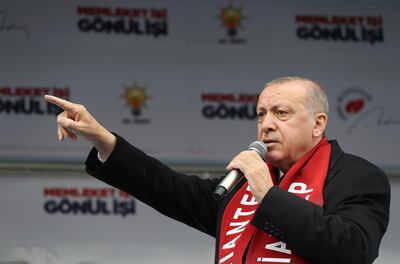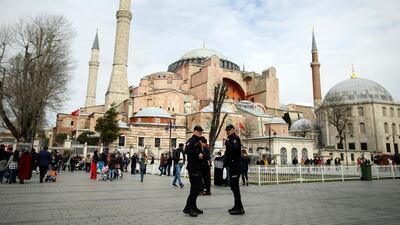Turkey has begun to track the past movements of the suspect in the Christchurch mosque shootings after it emerged he paid an extended visit to the country more than two years ago.
A Turkish official said initial checks found that Brenton Tarrant, 28, came to Turkey twice in 2016 – from March 17 to 20 and again from September 13 to October 25. State-run media released a photograph of Mr Tarrant entering through Istanbul’s Ataturk airport without specifying the date.
“We are currently investigating the terrorist’s movements and contacts within the country,” the official said on condition of anonymity.
Security forces are trying to piece together where Mr Tarrant went and whom he met while he was in Turkey, particularly during his six-week stay.
“The Turkish investigation will clarify when he arrived in Istanbul and where he stayed and probably his cellphone communication if he had one,” said Yusuf Alabarda, a security analyst at Ankara’s Foundation for Political, Economic and Social Research.
“Also the closed-circuit camera system, which is very effective inside Turkey because Turkey has struggled with terrorism for more than 40 years, and his links with people in Istanbul or other cities.”
Investigators are to initially focus on the area around Sultanahmet Square in the heart of Istanbul's tourist district that includes Hagia Sophia, a former church and mosque that is now a museum, the Hurriyet newspaper reported. They will also examine hotel, airport and bus records. Mr Tarrant referred to returning Hagia Sophia to Christian worship in a "manifesto" he distributed prior to the attacks.
Turkey’s President Recep Tayyip Erdogan has repeatedly talked about Friday’s attacks, in which at least 50 people were killed, during televised campaign rallies ahead of local elections at the end of the month, even showing footage of the shootings on large on-stage screens.
The president linked the attacks to the elections, asking a crowd in Gaziantep on Friday if they were “ready to send a message to the enemies of Islam and Turkey" on March 31.

Turkey has been alarmed at Mr Tarrant’s naming of Mr Erdogan as a target for assassination, alongside German Chancellor Angela Merkel and London Mayor Sadiq Khan.
In his “manifesto”, Mr Tarrant labelled Mr Erdogan “the leader of one of the oldest enemies of our people” and mentioned Europe’s “Turk invaders”.
The Australian suspect appears to have developed an obsession with the centuries-old conflicts between the Muslim Ottomans and Christian armies in the Balkans. The weapons used in the attacks were scrawled with the dates of battles and the names of historic Christian leaders and Mr Tarant is reported to have visited Ottoman battle sites in the region.
In the months after leaving Turkey in late 2016, he travelled to Serbia, Bosnia, Croatia and Montenegro. The following year he visited France, Spain and Portugal, the sites of conflict between European and Arab armies, and last year went to Bulgaria, Romania and Hungary.
Bulgarian Chief Prosecutor Sotir Tsatsarov said authorities were investigating Mr Tarrant’s visit. Serbia’s ambassador to Ankara, Zoran Markovic, denounced any link between the “mad, sick, criminal and totally unacceptable act and the history of Balkans”.
Many commentators in Turkey pointed to Mr Tarrant’s trips to the country falling either side of the July 2016 coup attempt, without offering further explanation.
On Sunday, Turkish Vice President Fuat Oktay and Foreign Minister Mevlut Cavusoglu arrived in New Zealand, where they met officials and some of the relatives of the three injured Turkish worshippers.
“This terrorist act, unfortunately, has shown us once again that there are no limits of hostility to Islam,” Mr Oktay said on Saturday before departing from Istanbul.

